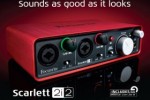Get to Know a Drummer’s Best Friend
A drummer can only enjoy his drumming sessions when he has an excellent pair of drumsticks. After all, to a drummer, they are as equally important as the other and more expensive equipment. If you’re just starting out you should get to know the variety of drumsticks available. It is better to do some research prior to shopping for a pair to make sure you get the right set.
There are several factors that determine the kind of drumsticks you should buy. The factors include the size, material, and thickness of the drum as well as the kind of drum they will be used for. Moreover, the drumsticks may also differ depending on the expertise of the drummer. All these factors play a major role in the purchase decision of a drummer.
The Beginner’s Drumstick
This is the most basic kind of drumstick. This is a standard variety that is used mostly with rock drum sets. This variety is also employed by most school bands as the students participating in the band would be beginners and would easily be able to use a pair of these.

The basic drum sticks are long and have a thin design. The wood used in making these sticks is mostly Maple, Oak or Hickory. Although initially made from wood, now the sticks available in the market are also made from rubber, plastic, carbon and nylon.
The tapered edge of a drum stick has a small rubber bulb capped on its head. The rubber guard helps to protect the head of the drum and prevents the chipping or splintering of wood. Moreover, the rubber guard also produces a sound that is slightly warmer than the one produced by a stick without a rubber guard.
The thickness of the stick may vary and you can select the right thickness depending on what you wish to play. A drum stick that is not as thick such as 7a is mostly used to play classical or jazz music. To play hard rock music, you will need a drum stick that has more thickness such as 2b or 5b.
The Percussion Mallet
These drum sticks are much more specialized and are used typically by experienced drummers playing in classical concerts or in loud bands. The length of the Percussion Mallet is the same as that of the standard drum stick. However, these sticks have thick handles and their heads are capped using cloth mallets.

The percussion mallet drum stick is made mostly using plastic or wood and the mallet on top is usually made with yarn, cotton or any other kind of fabric which is rolled into a ball and attached on top. Even though these sticks are mostly used to play huge kettle drums as well as other loud-sounding or bellowing instruments, they also work quite well with cymbals and can produce a hard building sound.
The Drum Brush
A greatly specialized drum stick, the drum brush is commonly used to play jazz. The drum brush has a short handle and has a number of bristles that fan out on its top. The brush-style sticks are available in two different types. One is the telescopic drum brush. This drum brush is adjustable and the fan can be made wider or shorter, as required. The other drum brush is non-telescopic. This one has a fan with a fixed length.

The bristles of the fan are made using nylon, metal wire or plastic. The drum brush produces a very light drum beat. It can also be brushed over the drum head surface to produce a constant background sound that can compliment other musical instruments.
Once you have done some basic research and understand the difference between the different types of drum sticks, you will be in a better position to buy a drum stick that meets your musical requirements.





